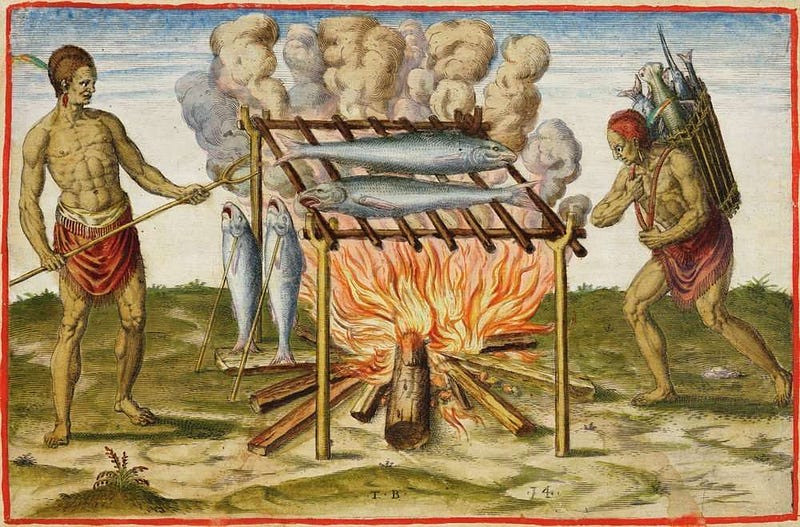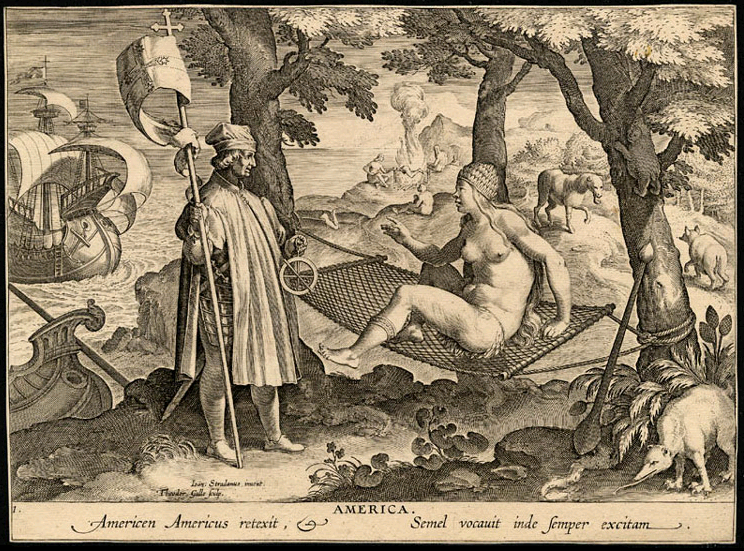The Taíno Legacy: Barbecue, Hammock, and Tobacco Unveiled
Written on
Chapter 1: The Taíno Influence on Everyday Life
Many English speakers recognize the terms barbecue, hammock, and tobacco, yet few are aware of their origins. These words trace back to the Taíno people, who were tragically decimated following the arrival of Christopher Columbus.

On October 12, 1492, after a long voyage, Columbus encountered a new land — the Americas, specifically the Caribbean islands of San Salvador and Hispaniola. These islands were inhabited by the Taíno tribes, a peaceful group of natives.
> “They are exceptionally gentle and unaware of malice; they neither murder nor steal… Your highness may believe that in all the world, there can be no better people…”
> — Christopher Columbus on the Taíno people
Columbus and his crew soon absorbed aspects of Taíno culture, leading to the incorporation of new vocabulary into Spanish, which later found its way into English. Today, barbecue, hammock, and tobacco are essential elements of leisure activities, yet their roots lie with the Taíno civilization.
Let’s explore the origins of these three delightful terms.
Section 1.1: Barbecue’s Origins
Barbecue has its roots in the Taíno term "barbacoa."

Columbus observed the Taíno using wooden structures to cook meat and fish over an open flame or using a slow-roasting method with indirect heat and smoke. This cooking technique was referred to as barbacoa, meaning a wooden frame on a post. The Spanish adapted this term, which evolved into barbecue by the mid-17th century.
Section 1.2: The Hammock's Heritage
The word hammock derives from the Taíno word "hamaka."

The Taíno crafted hammocks from cotton fibers, allowing them to sleep elevated off the ground, thus shielding them from insects and wild animals. The term hamaka translates to a hanging piece of cloth, which the Spanish later modified to hamaca.
> “A great many Indians in canoes came to the ship today to barter their cotton and hamacas, or nets, in which they sleep.”
> — Christopher Columbus on hammocks
Section 1.3: The Story of Tobacco
Tobacco's name is derived from the Taíno word "tabago."

The English word for tobacco comes from the Spanish "tabaco," which was influenced by the Taíno term tabago. Upon Columbus's arrival, the Taíno presented him with dried tobacco leaves as a welcoming gift. Shortly after, he witnessed their practice of smoking these leaves through a Y-shaped tube, leading to altered states of consciousness.
> “The natives brought fruit, wooden spears, and certain dried leaves which emitted a unique aroma.”
> — Christopher Columbus on tobacco
Chapter 2: The Fate of the Taíno
The first video titled "Smoked Redfish (Traeger)" explores the art of preparing smoked redfish, showcasing techniques that connect modern cooking to historical practices, much like those of the Taíno.
The second video, "Lechon Asado - A Traditional Cuban BBQ Delicacy Made Easy," illustrates the preparation of a classic Cuban dish, reflecting the culinary influences that stem from the Taíno legacy.
The Taíno people faced a devastating decline following Columbus's arrival. The Spanish subjected them to mass killings, enslavement, and forced labor in mines, leading to widespread famine. However, the most significant cause of their extinction was disease, as the Taíno lacked immunity to smallpox and other illnesses brought by Europeans.
The Taíno population plummeted by over 90% within 25 years of Columbus’s landing. It is estimated that 500,000 Taíno once thrived on Hispaniola; by 1514, fewer than 32,000 remained. This tragic history is part of one of the most significant genocides against Native Americans.
Conclusion
In addition to barbecue, hammock, and tobacco, the Taíno contributed terms for maize (mahiz), hurricane (huricán), and canoe (kanaw